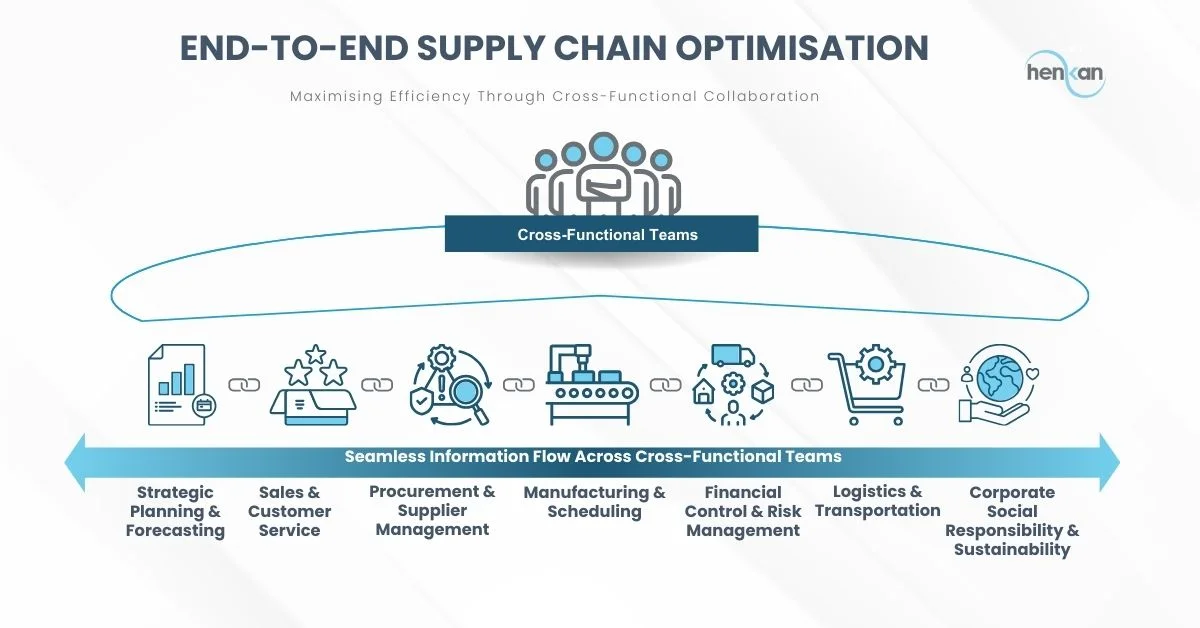Expert view by George Kesic.
As UK manufacturers navigate an increasingly unpredictable landscape, effective supply chain strategies have become essential. From mitigating global trade disruptions to improving resilience, businesses must rethink their approach to supply chain optimisation in 2025.
The Supply Chain Challenge
In today’s global marketplace, supply chains, not individual organisations, compete!
The competitive edge of any company can be easily compromised by just one weak link in the supply chain, whether known or unknown. As businesses strive to improve profitability and competitiveness, they are simultaneously working to streamline internal operations, often through cost-cutting and outsourcing initiatives. However, the increasing complexity of supply chains introduces vulnerabilities that demand careful management.
Controlling the Uncontrollable
Effective supply chain management is fundamentally about planning, implementing, and controlling interconnected processes to meet customer requirements as efficiently as possible. To achieve this, businesses must operate across strategic, tactical, and operational levels, ensuring extensive control, monitoring, and continual improvement. Yet, one fundamental question remains: how do you control external elements where you seemingly lack authority?
Historically, some companies extolled the virtues of a vertically integrated supply chain, where the comfort of being in control was realised by everything being done in-house. I recall time spent within a furniture manufacturing organisation, where the metal fittings were cast and machined in house, plastic components injection moulded, panel boards manufactured from scratch and then all of the cutting, machining, assembly, packaging and warehousing.
Own vehicles transferred these various components between manufacturing sites and onwards to owned retail sales outlets; in-house teams attended end-user customers for installation, adjustment and commissioning. Everything in-house, from start to finish.
The sheer diversification required in the vertical integration scenario, with the demands on resource and capability, caused this operating model to fall into disuse as companies began to see little value in what they deemed “non-core activity”, particularly in the wake of globalisation.
Today, however, having been bitten by the impact of the instability of globalisation, companies are reconsidering vertical integration, not necessarily to take back non-core activities, but to gain strategic control over critical supply chain elements. Tesla exemplifies this, achieving 80% vertical integration.
Mastering Supply Chain Functions
- Strategic Planning & Forecasting
- Sales & Customer Service
- Procurement & Supplier Management
- Manufacturing & Scheduling
- Logistics & Transportation
- Financial Control & Risk Management
- Corporate Social Responsibility & Sustainability
Each of these elements is interconnected, forming a seamless, cyclical process. A single misstep at any point can disrupt an entire organisation, impacting costs, efficiency, and customer satisfaction.

Applying Lean Principles to Build Resilience Across the Extended Supply Chain
Internally, a Customer-Supplier mindset needs to be in place at all handover points of the entire order fulfilment process, using the appropriate Lean tools and techniques to integrate all functions in optimising that part of the end-to-end supply chain within the four walls, within control. However, this quest can be self-limiting due to the traditional structures commonly found across organisations.
To address this, there needs to be a shift to cross-functional teams responsible for management of customer orders and supply chain execution. This horizontal, customer-focused structure enhances collaboration, reduces bottlenecks, and improves overall responsiveness.
Expanding Control Beyond the 4 Walls: Supplier Development and Customer Collaboration
The Japanese automotive industry has taught the value of investing in suppliers through Supplier Development, where engineers work collaboratively with key suppliers at their manufacturing locations, deploying Lean concepts to impart consistency, reliability and stability in their processes, hence removing the risk to supply of those products and components.
Similarly, it is essential to engage with customers to fully understand their needs through Customer Collaboration. Many companies claim to listen to the Voice of the Customer, yet few translate feedback into actionable insights. Effective collaboration requires defining measurable expectations and identifying unstated needs, often through direct observation and engagement with end users.
The Future: Strategic Partnerships for Innovation
Rather than operating in isolation, businesses must build strategic partnerships with suppliers and customers alike. These partnerships drive innovation by combining product expertise with real-world application insights. Companies engaged in this journey gain significant market advantage
UK manufacturers can no longer afford to view supply chains as a cost centre but rather as a strategic advantage. By strengthening supplier relationships, embracing lean principles, and investing in digital transformation, companies can navigate market uncertainties and build long-term resilience.
About the Author: George Kesic
 George Kesic is a business process improvement expert with over 30 years of practical experience. As Technical Director at Henkan, he has led operational transformation projects for global manufacturers, including Heineken, Unilever, and Philips.
George Kesic is a business process improvement expert with over 30 years of practical experience. As Technical Director at Henkan, he has led operational transformation projects for global manufacturers, including Heineken, Unilever, and Philips.
His expertise in supply chain strategy, lean implementation, and digital transformation has helped organisations unlock efficiency, reduce costs, and build sustainable competitive advantage.
If you’re looking to strengthen your supply chain and build operational resilience, connect with George to explore tailored strategies that drive efficiency, reduce costs, and overcome complex supply chain challenges.







